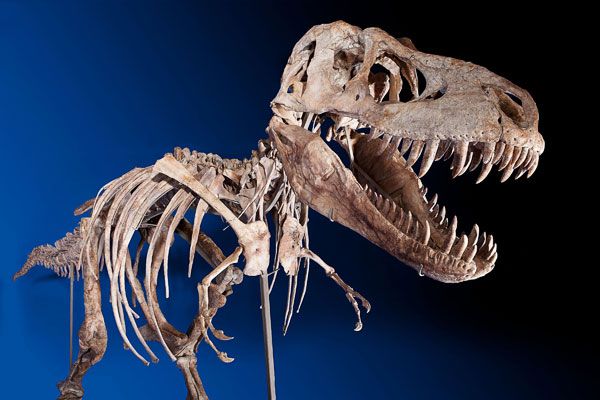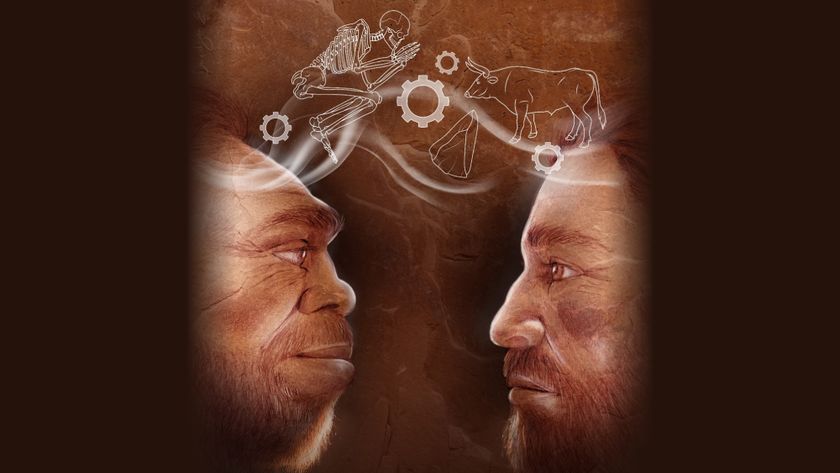Rare Tyrannosaurus Skeleton to Be Auctioned

A nearly complete skeleton of a towering Tyrannosaurus bataar is set to go on auction on Sunday (May 20). The skeleton measures some 8-feet (2.4-meters) tall and 24-feet (7.3-meters) long.
This is the first full Tyrannosaurus specimen to go on auction since "Sue," a Tyrannosaurus rex, sold for $8.3 million in 1997, said David Herskowitz, director of Natural History at Heritage Auctions, the auction house conducting the sale.
The Tyrannosaurus bataar was uncovered in the Gobi Desert roughly eight years ago and has an estimated value of $950,000. Also called Tarbosaurus bataar, this species is an Asian relative to the North American T. rex.
While the specimen's skull is 80 percent complete, the body is about 75 percent complete, Herskowitz said, adding that it is "an impeccably preserved specimen of the sort that is almost never seen on the open market." The auction is scheduled to include other fossils and minerals, including a T. bataar tooth, an akylosaur skull from the dinosaur Saichania chulsanensis, and a skeleton from a troodontid — a group of dinosaurs whose anatomy suggests they were closely related to birds.
The auction takes place at Center 548 (548 W. 22nd Street in New York City), and the specimens will be on public display before the auction, from May 17–19.
"To find any dinosaur already mounted and ready for sale is extremely rare and quite uncommon because of the amount of time, energy and money it takes to prepare a mounted specimen," Herskowitz told LiveScience. "To find a complete dinosaur of any kind on the market is really quite rare, but the rarest of them all are the theropods."
Theropods are a group of carnivorous dinosaurs that included Tyrannosaurus, Allosaurus and others bipedal meat-eaters. As top predators, they were less abundant than other species, he said.
Sign up for the Live Science daily newsletter now
Get the world’s most fascinating discoveries delivered straight to your inbox.
You can follow LiveScience senior writer Wynne Parry on Twitter @Wynne_Parry. Follow LiveScience for the latest in science news and discoveries on Twitter @livescience and on Facebook.













